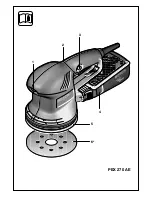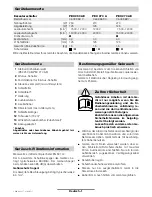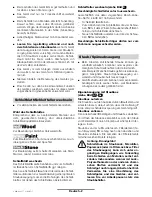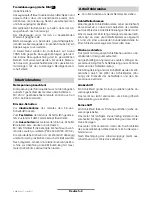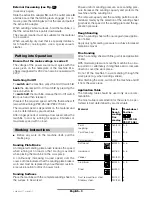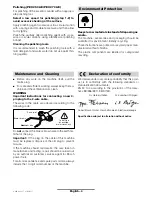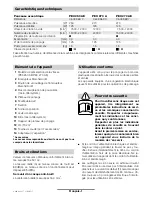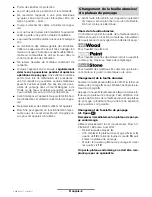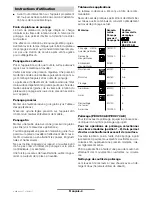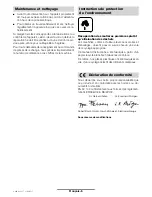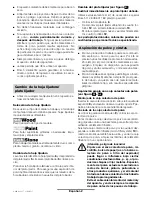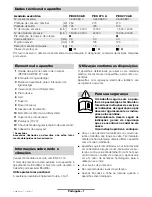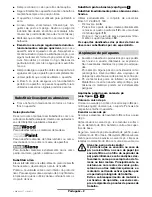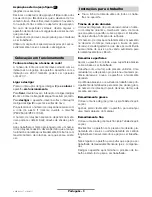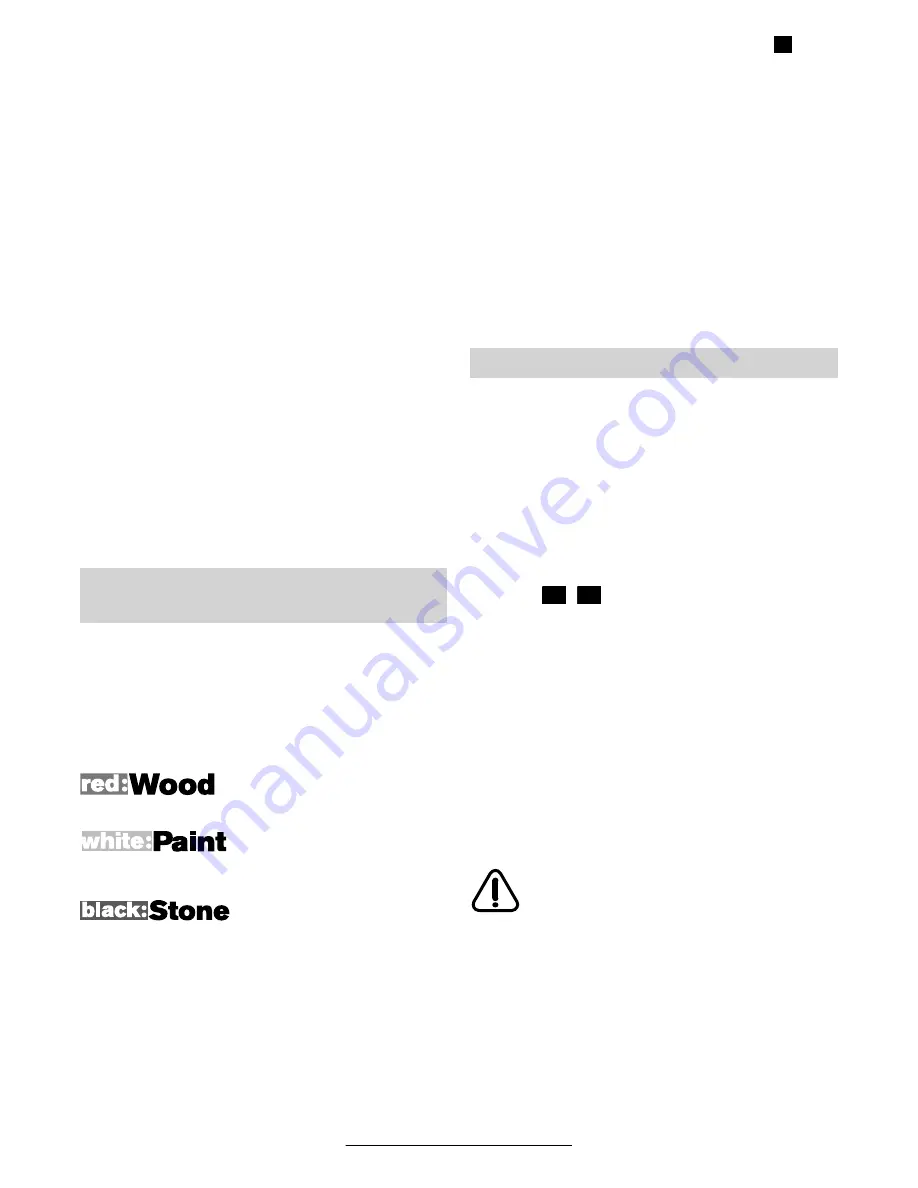
English–2
2 609 932 217 • (02.05) T
■
Always direct the cable to the rear away from the
machine.
■
Always hold the machine firmly when working and
provide for a secure stance.
■
The machine can be used only for dry sanding.
■
When sanding metal, flying sparks are produced.
Take care that no persons are endangered. Be-
cause of the danger of fire, no combustible materi-
als should be located in the vicinity (spark flying
zone).
■
Working with material containing asbestos is not
permitted.
■
If your tool is equipped with a dust bag,
empty it
frequently and after completion of sanding.
Be
extremely careful of dust disposal, materials in fine
particle form may be explosive. Do not throw sand-
ing dust on an open fire. Spontaneous combustion
may in time, result from mixture of oil or water with
dust particles.
■
Always switch the machine off and wait until it has
come to a standstill before placing it down.
■
Never allow children to use the machine.
■
Bosch is able to ensure flawless functioning of the
machine only if the original accessories intended
for it are used.
■
Before any work on the machine itself, pull the
mains plug.
Selecting the Sanding Sheet
Depending on the material to be worked and the de-
sired material removal, various sanding sheet qualities
are to be used:
For the working of all wooden materials.
For the working of paint/enamel coats or primers and
fillers.
For the working of extremely hard materials such as
stone, marble, granite, ceramic or glass.
Replacing the Sanding Sheet
Lift the sanding sheet
6
at the side and pull it off the
sanding plate
5
. Clean the sanding plate
5
, if required.
Press the new sanding sheet
6
against the bottom of
the sanding plate. To ensure optimum dust extraction,
the holes of the sanding sheet must match with those
of the sanding plate.
Replacing the Sanding Plate (see Fig.
)
Replace damaged sanding plates without delay.
Use only the Bosch accessory kit (No. 2 608 601 169)
intended for this purpose:
–
Remove the sanding sheet
6
.
–
To remove the sanding plate, unscrew the four
Torx screws
12
with the L-type Torx key
13
and
take off the sanding plate.
–
Attach the new sanding plate and screw in the
four Torx screws
12
tightly.
Damaged backing plates should be changed
only by a specialist.
■
Dust produced while working can be detrimental to
health, inflammable or explosive. Suitable protec-
tion measures are required.
Examples: Some dusts are considered to be carci-
nogenic. Use suitable dust/chip extraction and
wear a dust protection mask.
■
Light metal dust can burn or explode. Always keep
the work place clean since material mixtures are
especially dangerous.
Internal Vacuuming with Dust Box
(see Fig.
–
)
Attaching the dust box
Attach the dust box to the outlet piece
8
and allow it
to latch. Take care that the holder
7
engages into the
corresponding opening in the machine.
Emptying the dust box
Press the latching lever
9
and pull off the dust box.
Before opening the dust box, it is recommended to
loosen the dust from the filter element by striking
against a hard surface.
Hold the dust box by the recessed grips, lift up the filter
element (micro-filtersystem)
10
upwards and empty
the dust box. Clean the vanes of the filter element with
a soft brush.
Caution, fire hazard!
For unfavourable conditions such as fly-
ing sparks when sanding metals, sanding
dust in the dust bag, micro filter or paper
sack (or in the filter sack or filter of the
wet/dry vacuum cleaner) can self-ignite,
especially when mixed with remainders
of varnish, polyurethane or other chemi-
cal materials and when the sanded work
piece is hot after long periods of working.
Avoid overheating the object being sand-
ed as well as the machine and always
empty the dust container before pauses
in the work.
Replacing the Sanding Sheet/
Sanding Plate
Dust/Chip Vacuuming
B
A1
A4
Содержание PEX 250 AE
Страница 2: ...PEX 270 AE 4 2 3 5 6 1 ...
Страница 3: ...A1 8 7 9 10 A2 A3 A4 B 11 5 12 13 6 C 8 9 14 Ø 19 mm ...


